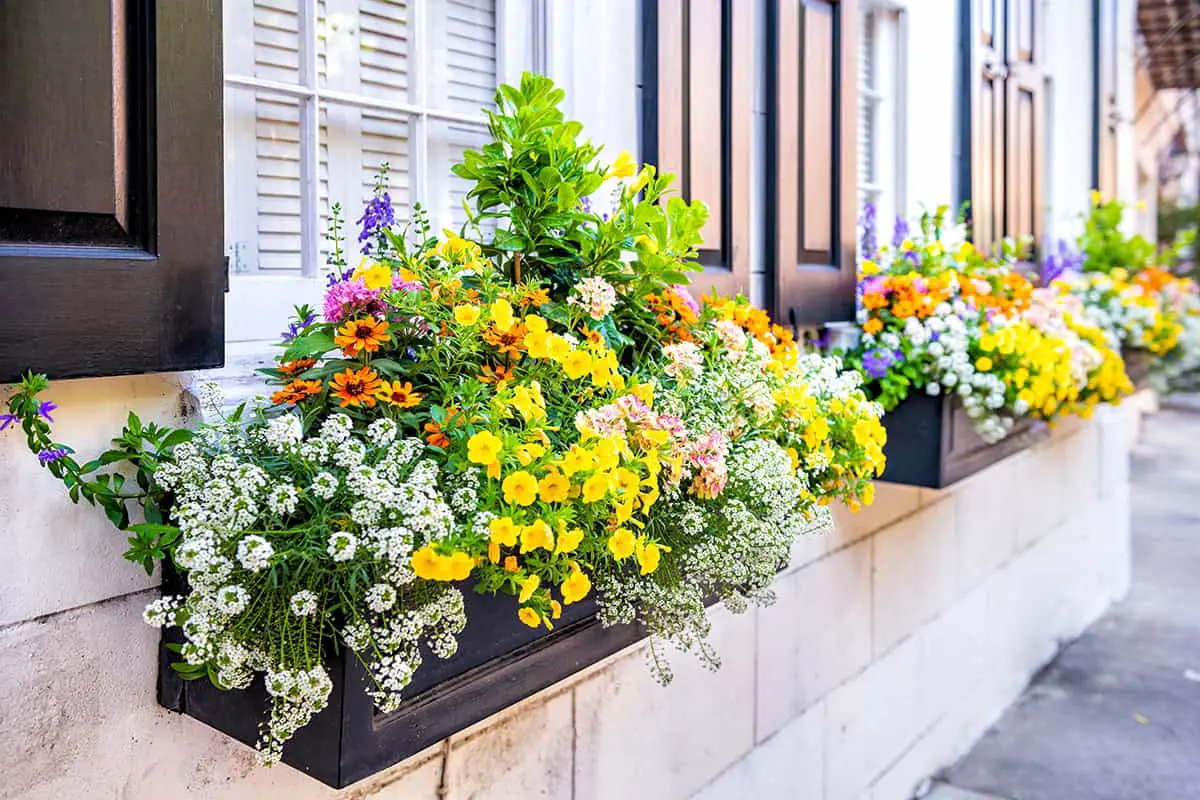There’s nothing like seeing flowers spill over a window box on a sunny day. If you’d like that, look for your own home, start with these 20 flowers. They’re reliable, colorful, and container‑friendly.
Table of Contents
Petunias

Known for their bright colors, Petunias bloom steadily from spring until the first frost, providing enduring visual appeal. Their trumpet-shaped blossoms come in shades like pink, purple, red, white, and yellow, attracting pollinators such as hummingbirds and butterflies, enhancing the liveliness of any window setting.
When choosing varieties, the grandiflora type offers large, striking flowers suitable for a dramatic effect and works well in hanging containers due to some cascading forms. For smaller spaces, more compact milliflora flowers bloom profusely, fitting neatly into tight window boxes.
Growth is best supported by full sun to partial shade and soil that drains well to prevent root issues. Regular removal of spent flowers promotes continuous blooming. These plants adapt well both in containers and garden beds, making them versatile for various outdoor decorating needs.
Geraniums
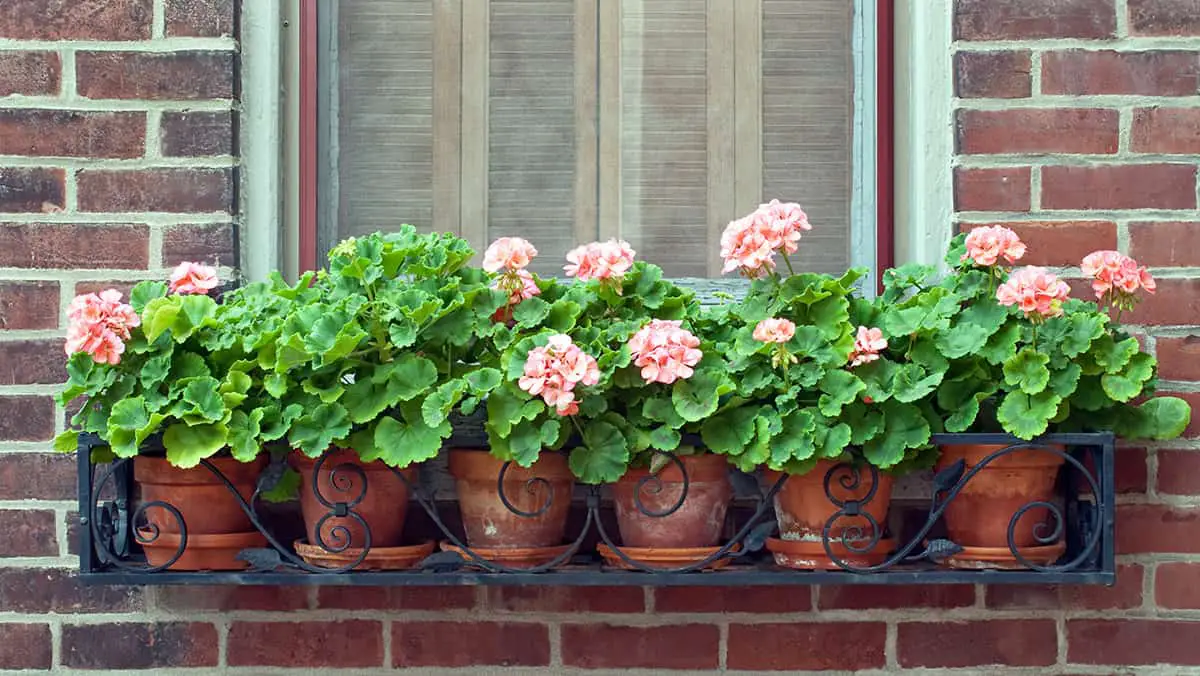
Adding vibrant colors and dense foliage, geraniums are well-suited for sunny window boxes. They require consistent sunlight and regular watering to maintain their health. Common varieties, such as those in the Pelargonium genus, offer colors ranging from white and pink to red.
Their hardy nature allows them to endure changing weather conditions, making them reliable for outdoor displays. Trailing types like ivy geraniums provide a cascading effect, adding depth and texture to arrangements.
Planting in soil with good drainage and allowing enough space between plants supports airflow and reduces disease risk. Periodic feeding during the growing season also helps sustain robust blooms and foliage.
Begonias

Begonias bring vivid color and varied shapes to window containers. These flowers thrive best in shaded or partially shaded spots. Tuberous types display single or double flowers in shades of white, pink, and red, adding elegance with their bold blooms.
To maintain flowers over a longer period, wax varieties are a strong option. These plants resist damage from deer and rabbits and perform well in containers, blooming steadily throughout warm months. Compact types with smaller leaves suited for durable growth also provide flower colors spanning white to red, fitting comfortably within many home gardens.
Growth habits vary, with upright and mound-forming types suited for garden beds, while trailing ones work well in hanging baskets.
They generally favor shade more than direct sunlight. Wax begonias are versatile; they do well in outdoor summer settings and can be brought indoors during colder seasons, making them useful for patios, walkways, or shaded woodland edges.
Impatiens
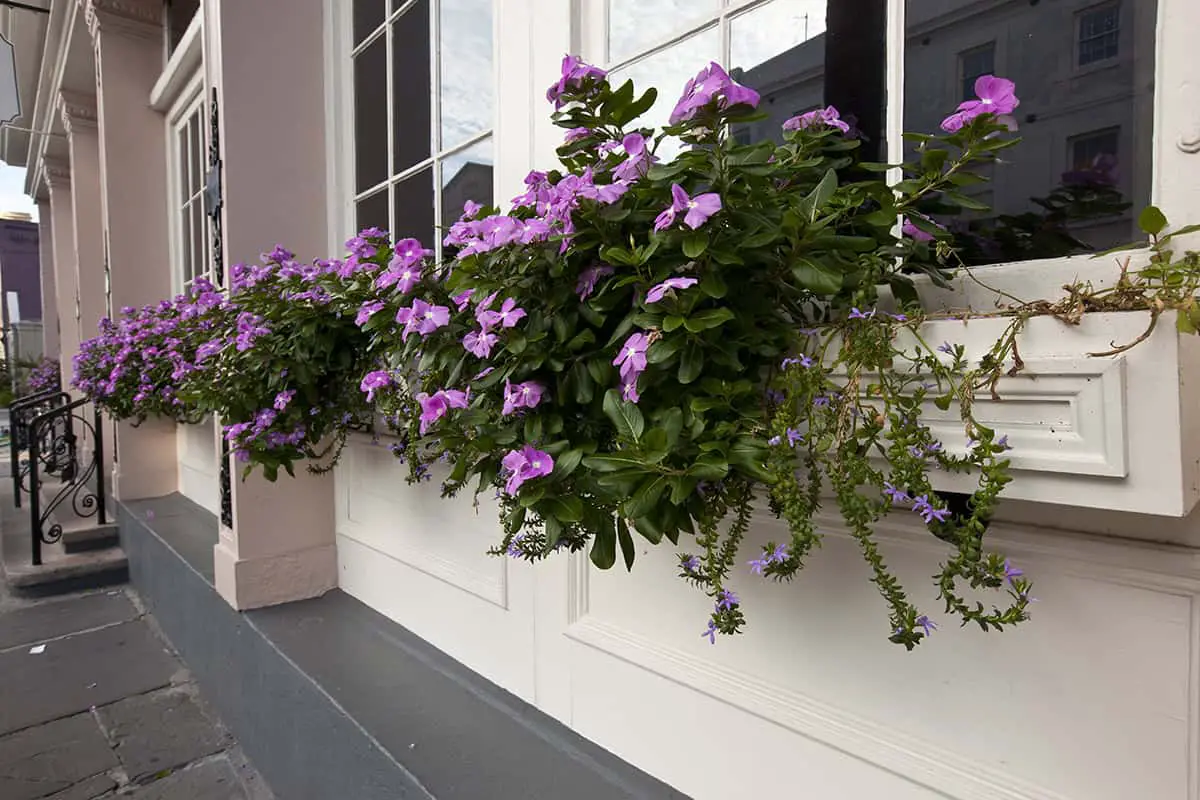
If your window gets more shade than sun, impatiens are a lifesaver. They’re available in just about every color you can think of, and they’re not picky as long as the soil’s rich and drains well. Keep the soil damp, but not soggy.
Give them room—8 to 12 inches between plants is good—so air can move and they fill out nicely. They flower from spring till frost and don’t mind skipping the deadheading step since old blooms just drop off. A little fertilizer every couple of weeks is enough, but don’t overdo it or you’ll get more leaves than flowers. Most grow a foot or so high, and their shiny leaves add a nice touch.
Marigolds
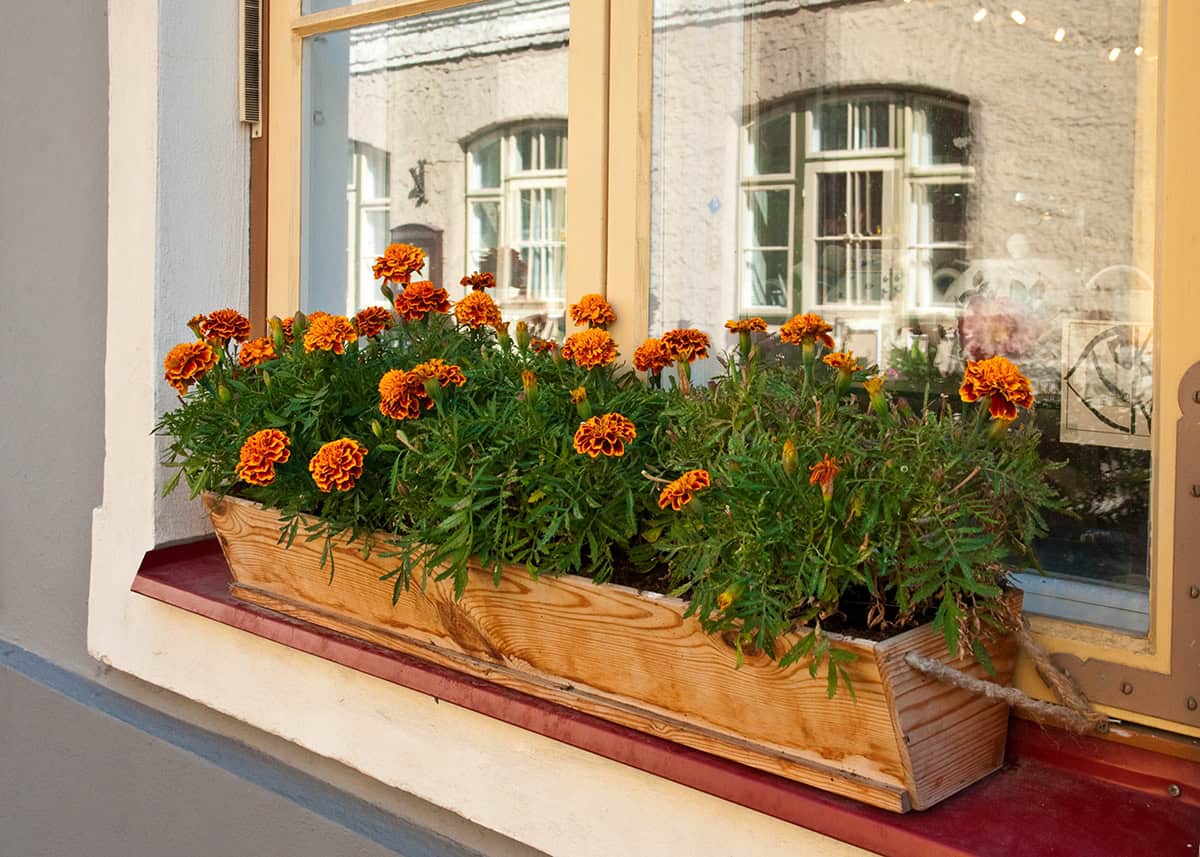
Marigolds are pure sunshine in a box—yellows and oranges that really stand out. Some are tiny (signet types), others, like African marigolds, get pretty tall, though for window boxes you’ll want the smaller ones.
They crave sun—at least six hours a day. Let the soil dry out between waterings, or you’ll risk root rot. Some types even have edible petals with a peppery kick, as long as you haven’t sprayed them with anything sketchy. Bonus: their scent tends to keep pests at bay, so they’re not just pretty faces.
Pansies
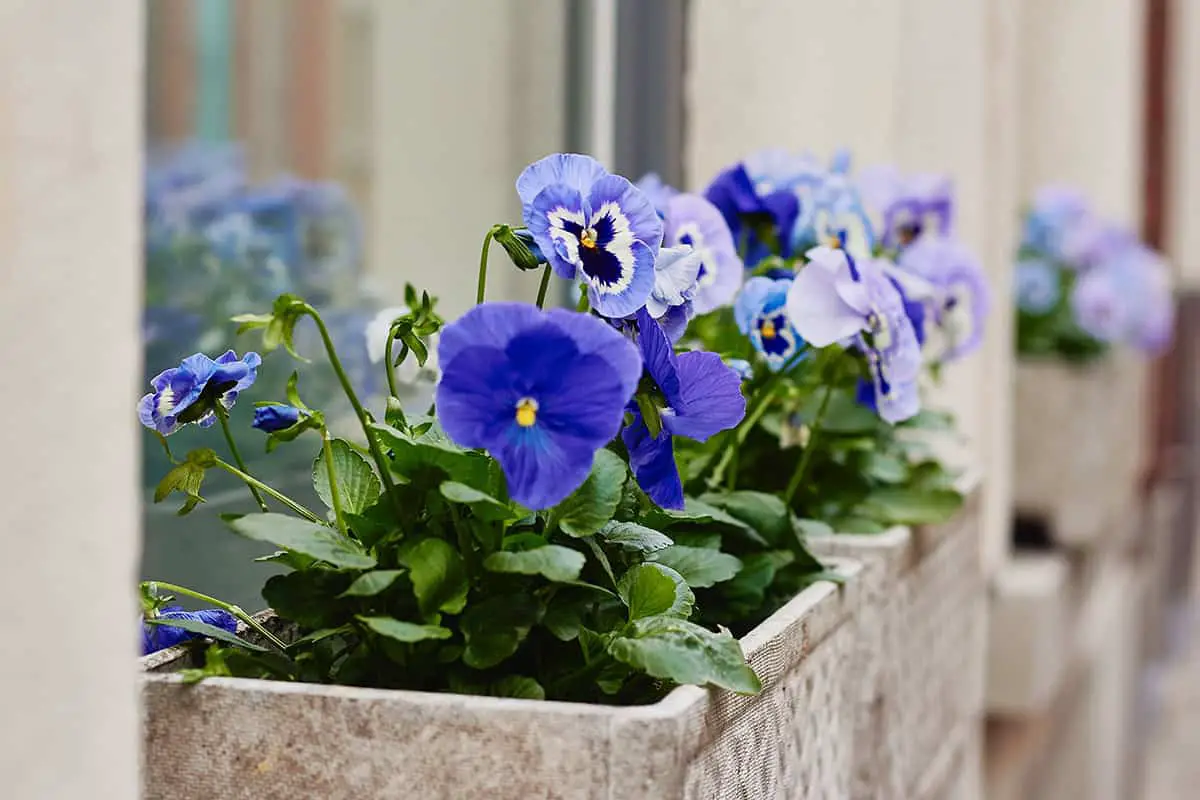
Pansies brighten your window boxes with a variety of colors. They thrive in cool temperatures, which makes them ideal for spring and fall. Your window boxes will pop with their shades of red, purple, yellow, and more. Place pansies in an area where they can get sunlight to flourish.
These flowers prefer temperatures between 40° F at night and 60° F during the day. You will find them easy to care for. Ensure they have well-drained soil to avoid root rot.
Pansies often have a dark center called a “face.” This feature adds a unique charm to your display. These flowers are not only beautiful but also edible, adding flair to salads and desserts.
Verbena
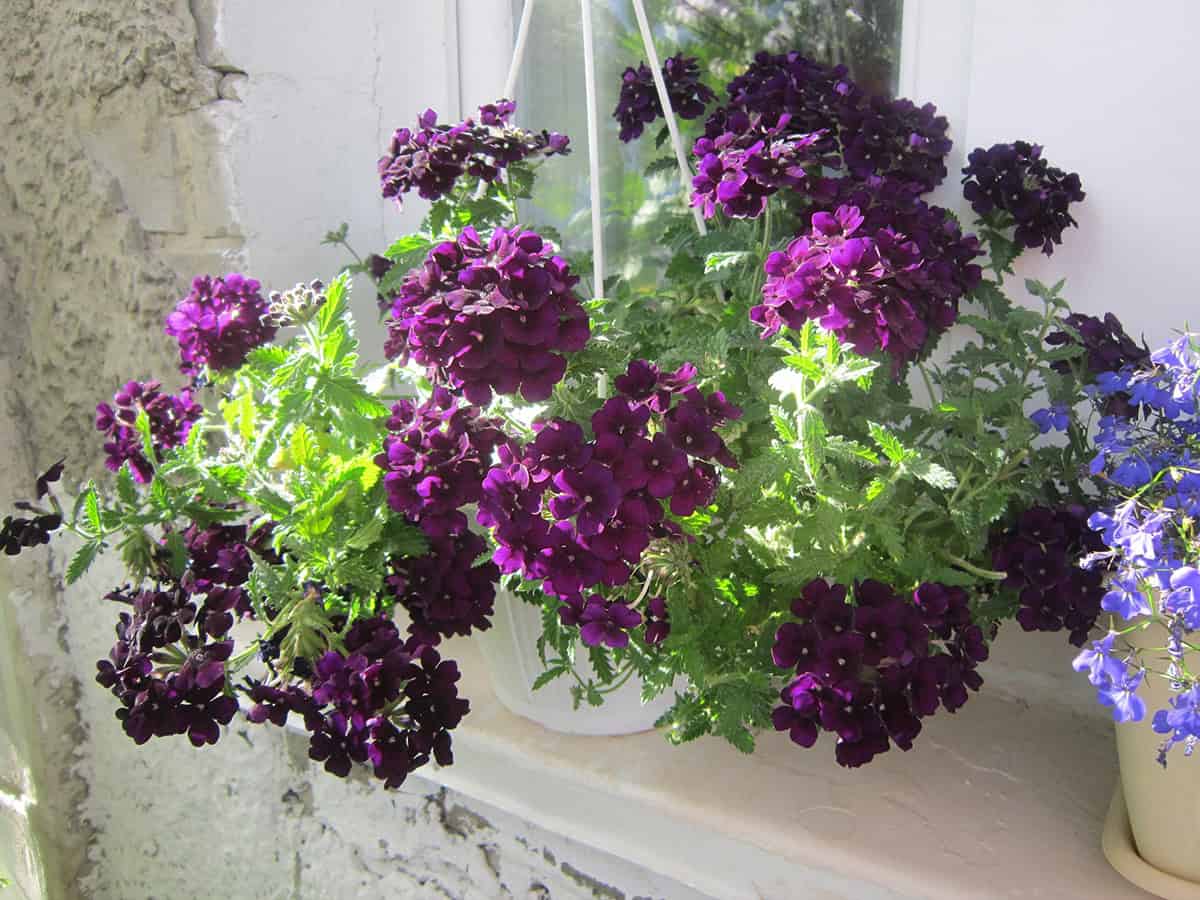
Verbena brings a lot of color—purple, pink, red, blue—and it’s happiest basking in full sun. Keep it watered when it’s settling in, but once it’s established, it can handle a dry spell. If it gets leggy by midsummer, a good trim perks it up and brings on more blooms. Sun really makes the difference here.
Fuchsias

Fuchsias are perfect for shaded windows, with their pendulous, almost delicate flowers in bold colors. They like things cool and moist, and too much sun just stresses them out. Rich, crumbly soil is best, though they’ll put up with heavier stuff if you’re careful with watering.
Fuchsia magellanica is a standout for its toughness and is a favorite for baskets and containers. The drooping, bell-like blooms look intricate but the care
Snapdragons
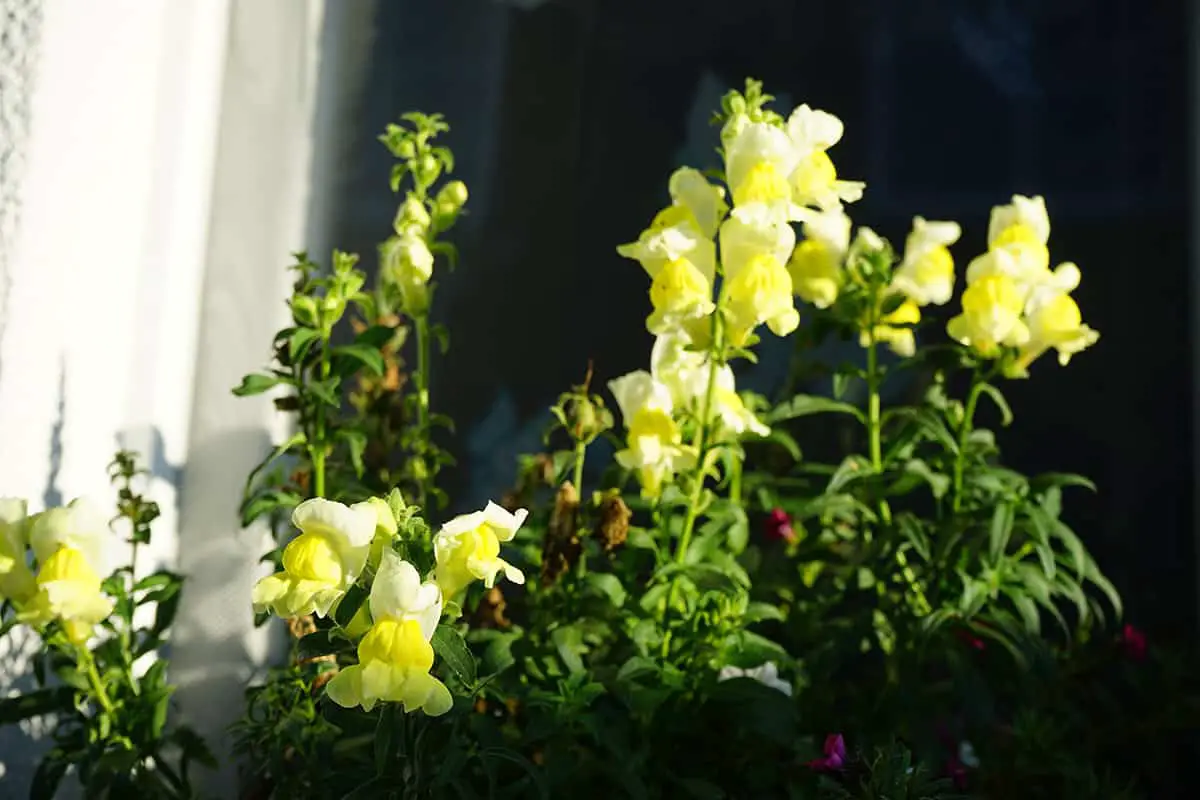
Snapdragons shoot up with tall spikes, which gives some height to your window box lineup. Their color range is huge, and they mix well with other flowers. Bees and butterflies love them, too.
They’re best in cooler weather—spring and fall suit them. Not a lot of fussing needed, but they do want sun. The more light they get, the stronger and more colorful they’ll be.
Lobelia

Tiny bursts of purple, pink, blue, or white flowers often surprise people with how well they spill over the edge of a window box. Cool weather keeps them happiest, and soil that drains well is a must. Water often enough to keep them fresh, but avoid overdoing it.
Sweet Alyssum
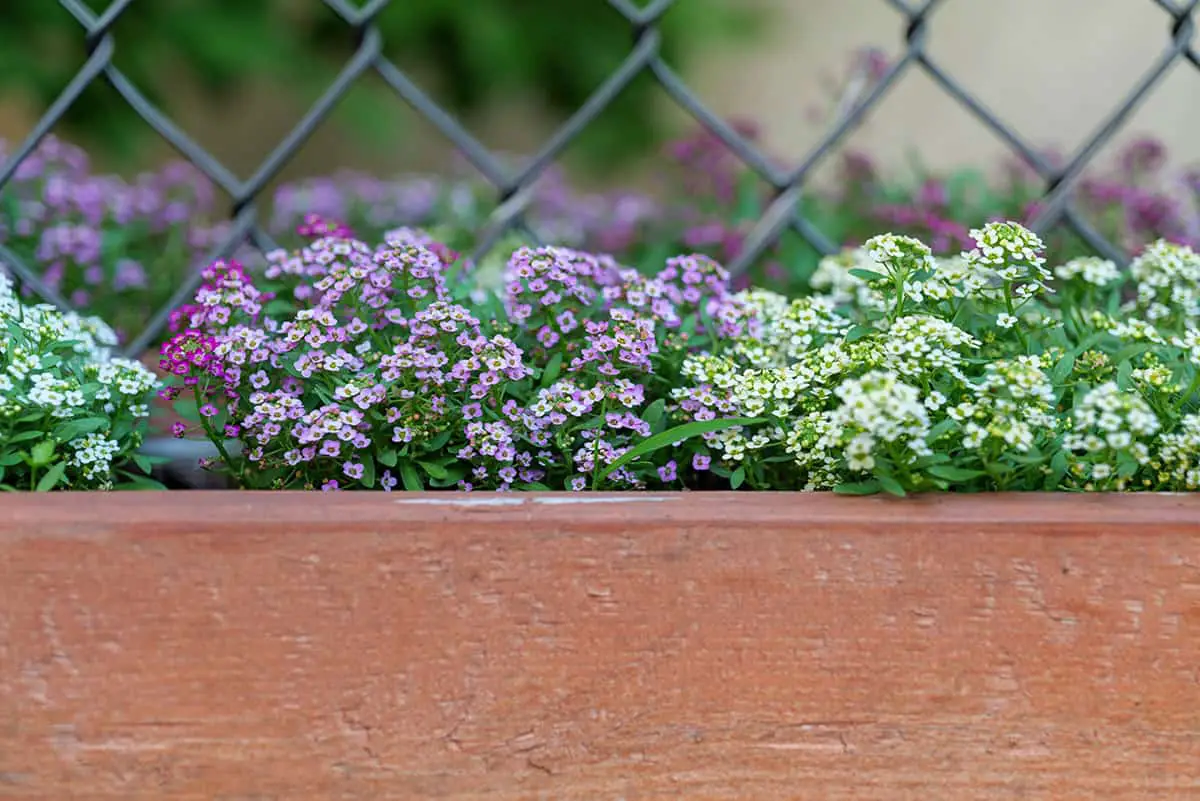
The first thing you’ll notice is the sweet scent, honey-like and surprisingly strong for such tiny flowers. Seeds can go straight into the soil once frost has passed, or you can start them indoors early. Since they need light to germinate, keep them close to the surface.
Calibrachoa
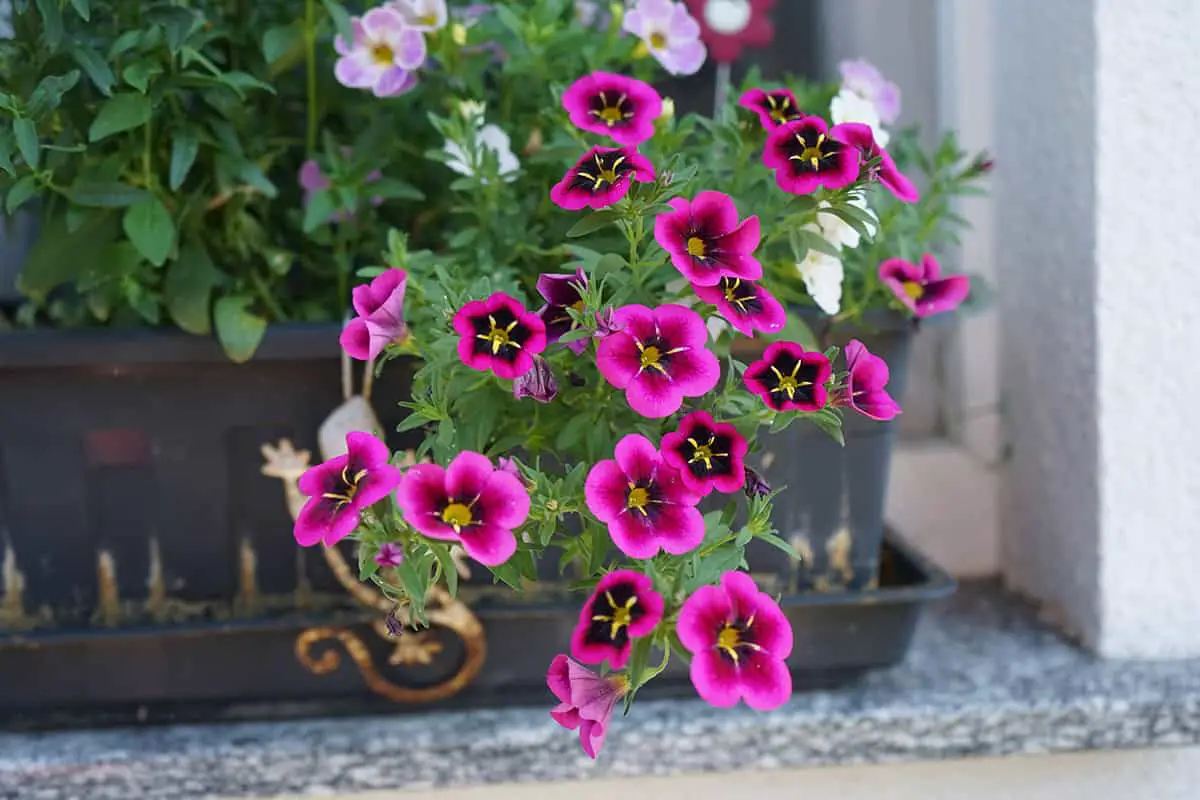
Calibrachoa is like a mini petunia, covered in bell-shaped blooms in every color you can imagine. It’s compact, trails nicely, and looks great spilling over a box.
No need to deadhead—old flowers just drop off. Give them sun (full or partial) and soil that drains well. Water regularly for best results. A little balanced fertilizer every couple weeks keeps them blooming.
They’re originally from South America and usually stay under a foot tall, but new types from seed give you more choices than ever.
Dianthus
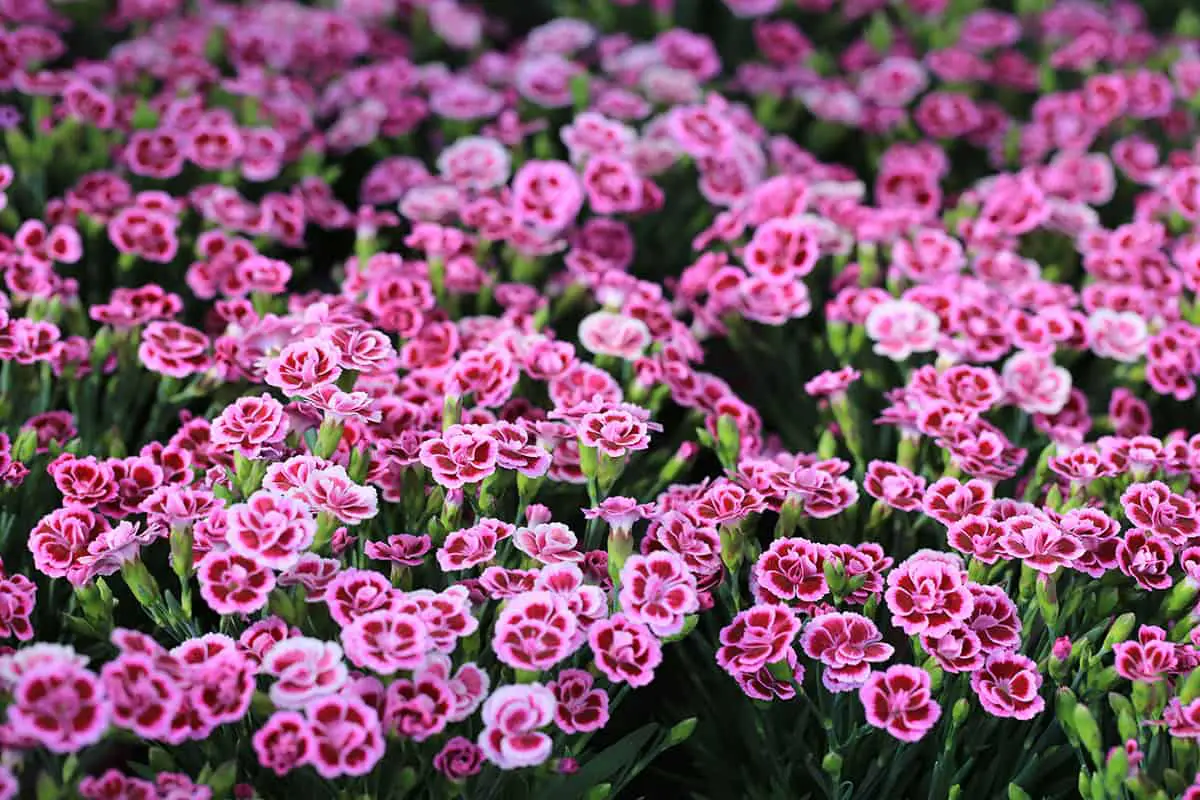
Few flowers feel more classic than dianthus with their spicy fragrance and traditional shades of pink, red, and white. They enjoy cool weather and at least part of the day in sun. Soil that drains freely suits them best, and they’re fine with occasional dry spells.
Nasturtiums
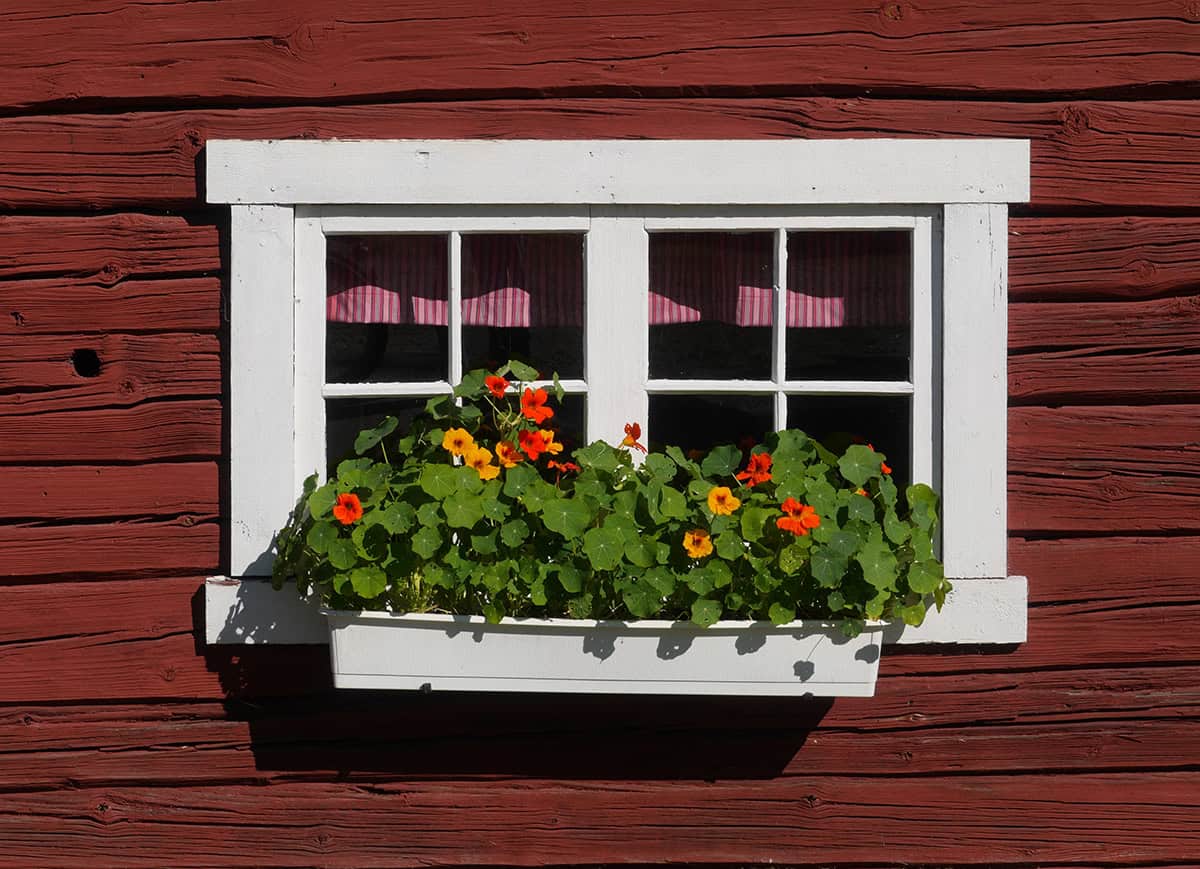
Cheerful, bold, and a little wild — nasturtiums bring round leaves and vibrant flowers to any box. More sun equals more color, though a bit of shade just makes them stretch taller. They’re edible too, adding a peppery kick to salads and garnishes.
Dusty Miller
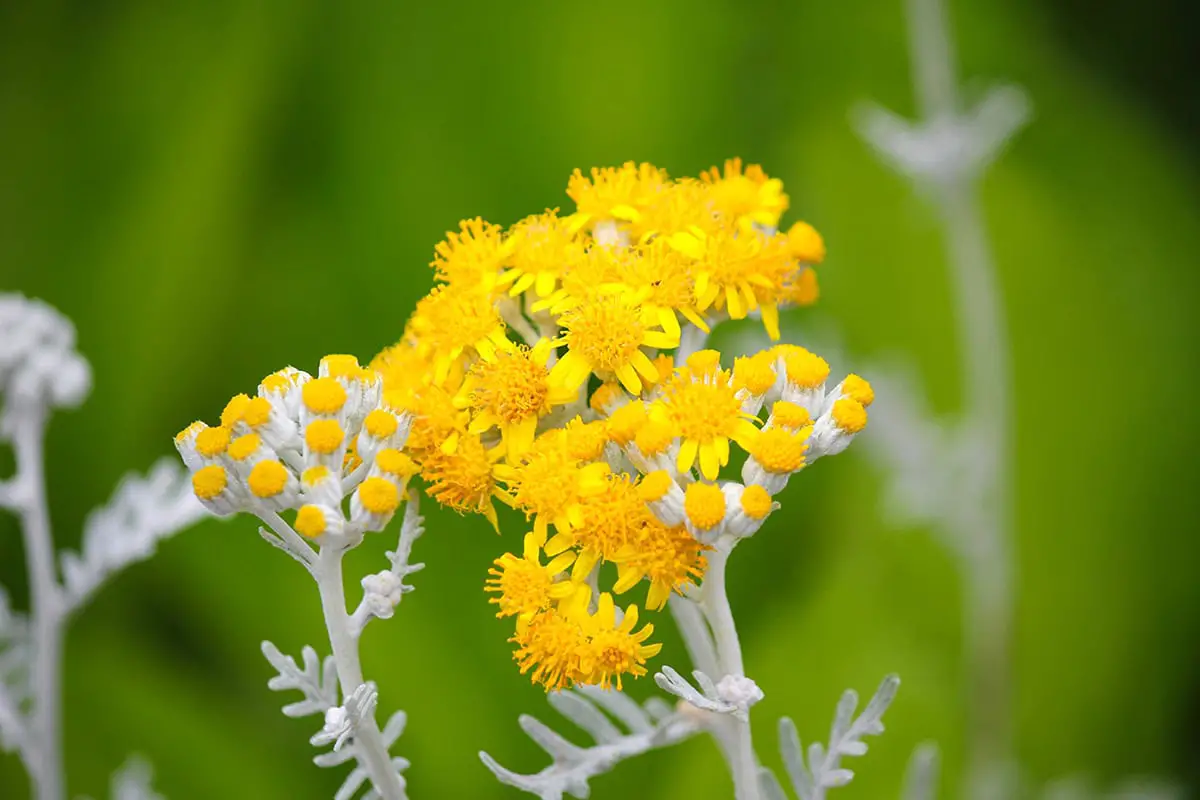
A silvery plant like dusty miller can change the mood of a whole arrangement. It hails from the Mediterranean, which explains its tolerance for dry soil and bright sun. The finely cut leaves of varieties like Silver Dust add contrast against colorful blooms.
Portulaca
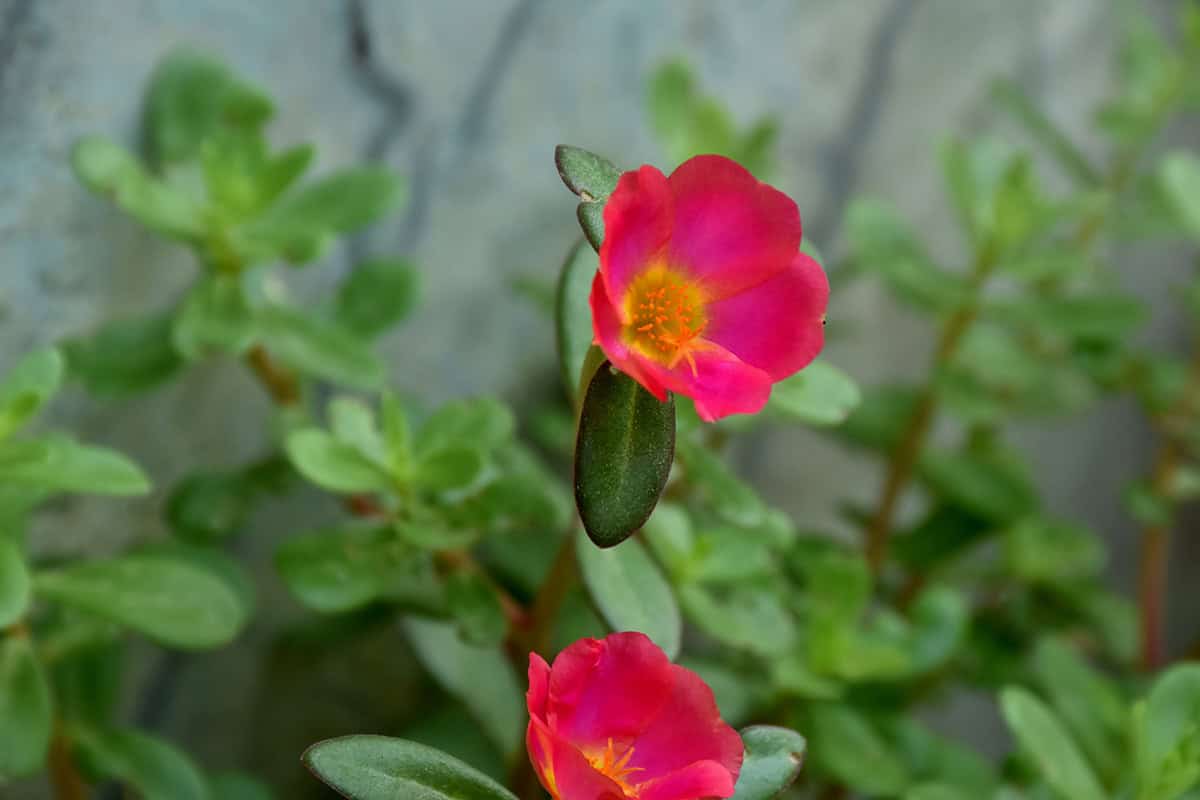
Portulaca, also known as Moss Rose, offers a striking addition to your window boxes. It is a heat-tolerant annual with a resilience that makes it ideal for sunny spots. As you consider plants for your space, know that Portulaca thrives with minimal care, creating a cascade of vibrant colors.
Portulaca flowers bloom from early summer until the first frost, presenting a mix of jewel tones that brighten any window box setup. The succulent leaves indicate its drought tolerance, meaning you can enjoy its beauty without constant watering. The plant grows well in well-drained soil and requires full sun exposure to flourish.
When you plant Portulaca, ensure it gets plenty of sunlight throughout the day. Select window boxes that offer enough depth for the roots to establish. Deadhead spent blooms to encourage further flowering. The joy of Portulaca is its ongoing bloom cycle, which provides a prolonged display of color.
Maintenance is minimal, allowing you to take pleasure in the decorative impact without extensive gardening knowledge. Attracting butterflies and hummingbirds, Portulaca transforms your window area into a lively hub of activity.
Salvia
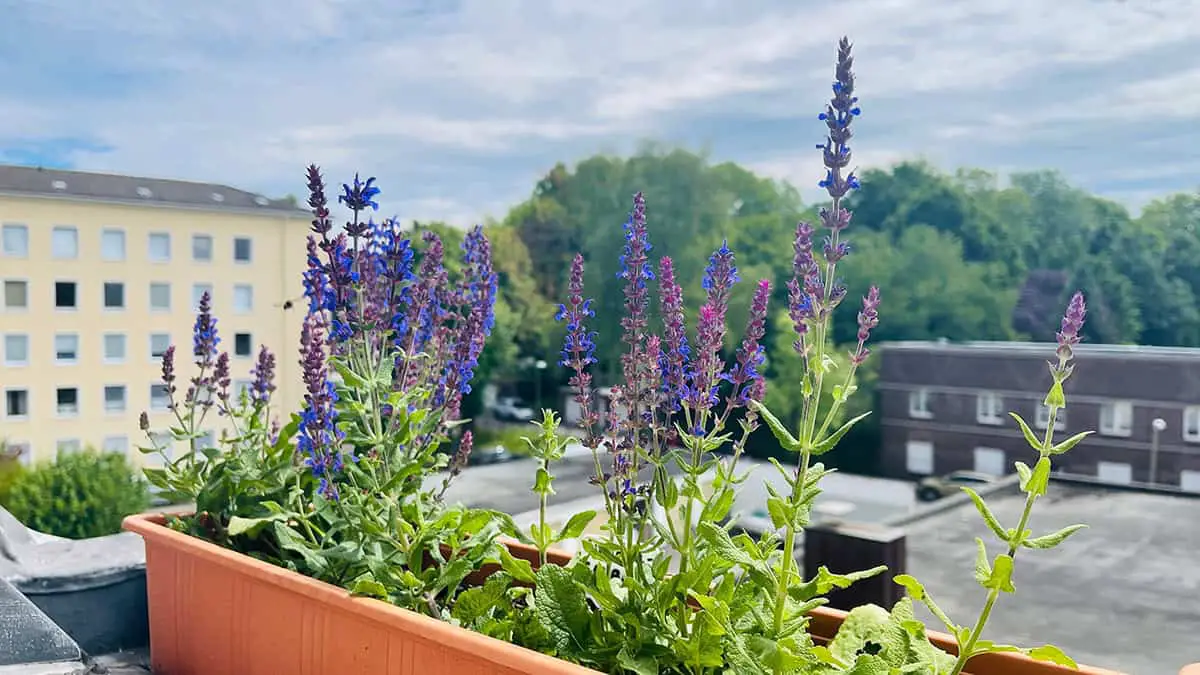
Square stems and bold, two-lipped flowers set salvias apart if you take a closer look. They grow quickly, like plenty of airflow, and do best when spaced generously. Once they’ve established themselves, they shrug off occasional dry spells without trouble.
Coleus
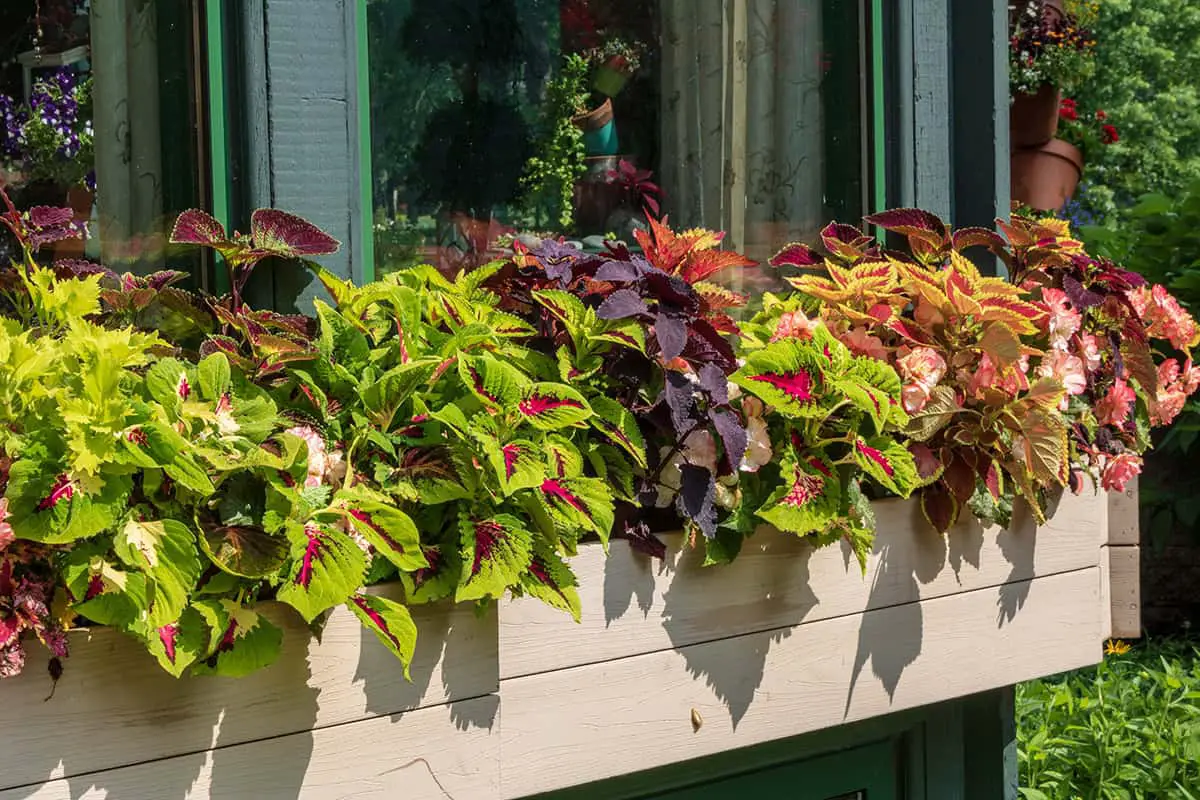
When selecting flowers for your window boxes, consider the vibrant coleus. Coleus plants catch the eye with colorful foliage in greens, yellows, pinks, reds, oranges, and maroons. They flourish in various environments, from shade to sun, adapting to different soil types. The coleus, with its diverse leaf patterns and hues, adds a tapestry of color to any setting.
You can grow coleus in your window boxes all year. If you do, take care to cut them back when they bloom. This ensures they stay lush and focus energy on their leaves, not flowers. Coleus is heat-tolerant and generally resilient against diseases and pests, making it an easy-care choice for gardeners at any experience level.
With proper care, coleus can stay vivacious throughout the seasons. Ensure your plants receive adequate water without becoming waterlogged. Fertilize them regularly to maintain healthy growth. If needed, pinch back the tips to encourage bushier foliage.
Ivy Geranium
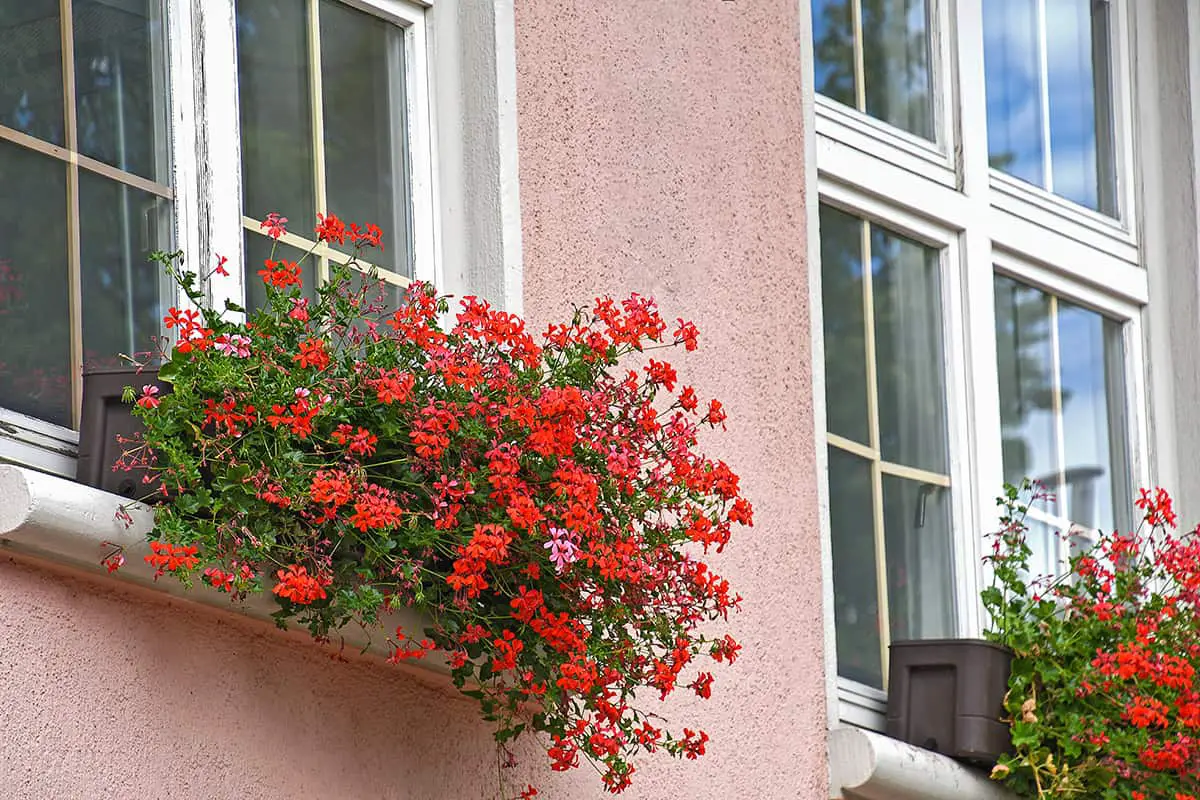
Long, trailing stems with ivy-shaped leaves make these one of the showiest choices for boxes. They’re flexible about light, thriving in sun or partial shade. Flowers come in whites, reds, and pinks, and cascade dramatically from varieties bred for length.
Vinca

Durability is the secret weapon of vinca. Even in sweltering heat or during dry spells, it keeps producing glossy green foliage and colorful flowers in purple, pink, red, or white. Once settled, it keeps going with very little fuss.
